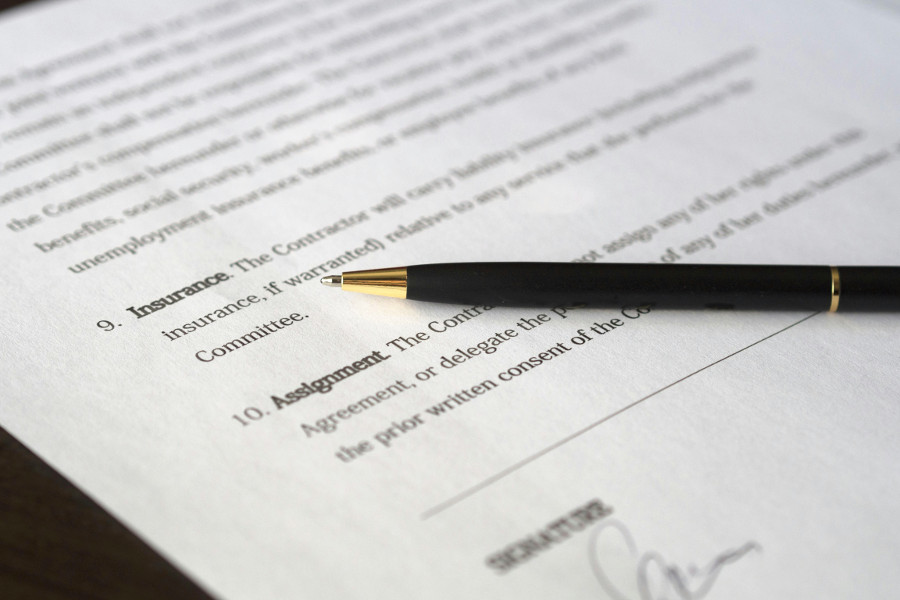Simplify Your Paperwork: Easy Ways to Organize and Archive Your Bills, Medical Records, Contracts, and Important Documents
We’ve all been there - papers piling up, envelopes stacked high, and important documents buried under a mountain of clutter. We’re constantly bombarded with paperwork in our daily lives, from bills and medical records to contracts and other important documents. It can feel like a never-ending task, but here’s the truth: organizing and archiving your paperwork doesn’t have to be overwhelming. In fact, with the right approach, it can actually bring a sense of calm and control into your life.

We live in a world where everything is constantly moving, changing, and demanding our attention. It’s easy to let those important documents slip through the cracks, only to realize later that you can’t find what you need in the middle of a crisis. Whether it’s forgetting to pay a bill, scrambling to find medical records, or dealing with expired contracts, disorganization only adds to the stress. But what if you could take a deep breath, relax, and know exactly where everything is?
Just like anything in life, the key to maintaining your paperwork is to keep it simple. A little structure, some good habits, and a bit of routine can help you stay on top of things. In this guide, we’ll walk you through some easy ways to organize and archive your most important documents. The best part? These tips are simple to implement, and once you start, you’ll wonder why you didn’t do it sooner.
I. Understand What You Need to Keep
The first step to tackling your paperwork is figuring out what to keep and what to toss. It can be tempting to hang on to everything, but trust me - you don’t need to. The trick is knowing which documents deserve a spot in your filing system and which ones can be discarded. So, what exactly should you hang on to?
Bills:
When it comes to bills, there’s no need to keep everything forever. Some bills should be saved for a year, like your utility bills or credit card statements. But others, especially tax-related documents, need a bit more attention. Here’s a simple rule:
- Utility Bills: One year will do, unless you need them for tax purposes.
- Credit Card Statements: Keep them for a year (or until the payments are verified).
- Tax Bills: These need to be kept for at least seven years. Trust me, you’ll be glad you did if the tax man comes knocking.
Medical Records:
Medical records are a bit trickier because you’ll need to keep some things for a long time. You want to hold onto test results, prescriptions, and doctor’s notes, especially if you’re dealing with chronic conditions. Here’s a quick guide:
- Health Insurance Documents: Save them for at least seven years, just in case.
- Test Results and Prescriptions: These are important, so keep them long-term.
- Doctor’s Notes: Keep these as well, particularly if they’re tied to ongoing health issues.

Contracts and Agreements:
We all have contracts of some sort - whether it’s a lease, an employment agreement, or a service contract. While some might only be needed for a short time, others require long-term storage:
- Rental Agreements: Keep these for the duration of your lease and a few years afterward.
- Employment Contracts: These should be kept as long as you’re employed and a few years after you leave the job.
- Service Contracts: Warranties and service agreements should stay on file for the length of the contract and a little while after it expires.
Other Important Documents:
There are a few other documents that might come in handy, like insurance policies or tax returns. Make sure to hold onto these:
- Insurance Policies: Keep these for the life of the policy and a few years afterward.
- Tax Returns: Seven years is the sweet spot for these.
- Legal Documents: Birth certificates, wills, and property deeds should be stored safely for the long haul.
II. Sorting and Categorizing Your Documents
Once you know what you need to keep, it’s time to start sorting. This part is all about making things easy to find when you need them. It doesn’t have to be complicated - just a bit of organization goes a long way.
The First Step: Declutter
Before you dive into the organization, take a moment to declutter. Go through all those piles of paperwork and ask yourself: "Do I really need this?" Anything that’s outdated or unnecessary can be shredded. Letting go of old paperwork will help reduce the stress of managing it in the first place.
Categorizing Documents
Now that you've got your "keep" pile, it’s time to break it down into categories. This will make it easier to find things later. You can group documents by type (bills, medical, contracts) or by year - whatever makes the most sense for you.
For example:
- Bills: Separate your bills into categories like "Utility Bills," "Credit Cards," and "Tax-related Documents."
- Medical Records: These can be sorted by year or by family member if needed.
- Contracts: Leases, insurance policies, and employment contracts can all have their own folders.
Color Coding
If you want to make your system even more visual, consider using color-coded folders or labels. This way, you can instantly grab the document you need without having to sift through everything. Try assigning different colors for different categories:
- Red for bills
- Blue for medical records
- Green for contracts

Use of Folders / Binders
For physical storage, keep it simple. You can use binders with tabs or a good old-fashioned filing cabinet. Label everything clearly, and separate items into folders by category. If you’re dealing with a lot of paperwork, consider using dividers for each year or type of document.
III. How to Digitize and Store Your Documents
Going digital can really take your organization game to the next level. It’s a great way to clear up physical clutter and have access to your documents whenever you need them. Plus, it’s more secure and accessible than digging through a drawer.
The Benefits of Going Digital
When you digitize your paperwork, you get a ton of benefits:
- Easy access: With cloud storage, you can access your files from anywhere - your phone, your computer, or tablet.
- Space-saving: Digital files take up far less room than paper.
- Backup: If the original document gets lost or damaged, you’ve got a secure backup.
Choosing the Right Tools
To digitize your documents, you’ll need a scanner (or even your smartphone). There are plenty of apps out there, like Adobe Scan or CamScanner, that can easily convert paper into digital form. Plus, these apps help you organize files right from your phone, making it even easier.
Folder Structure for Digital Files
Once you’ve scanned your documents, create a logical folder structure to keep things organized. Start with broad categories (like "Medical Records," "Bills," "Contracts"), then break them down by year or family member if needed. It’s all about making things easy to find when you need them.
Cloud Storage Solutions
When it comes to storing your digital files, cloud services like Google Drive, Dropbox, or iCloud are great options. These services keep your documents safe, and you can access them from anywhere.
IV. Organizing and Archiving Bills and Medical Records
Some documents require more careful long-term storage. Bills and medical records, for example, need to be archived in a way that makes it easy to access them when necessary.
Bills
Bills are fairly easy to store. Keep utility bills and credit card statements for about a year, but more important documents like tax records should be saved for at least seven years. Use either a physical filing system or digital folders to store these, and remember to shred old documents once they’re no longer needed.
Medical Records
Medical records are more personal and should be kept securely. Whether you’re storing them physically or digitally, keep them organized by year or type of service. Don’t forget to make backup copies and keep them safe.
Physical Storage
Some things should still be kept in their original form, like birth certificates, legal documents, and insurance policies. Store these in a fireproof box or a secure filing cabinet, and keep them separate from other, less important paperwork.
V. Automating Your Process
Once you’ve set up your system, the next step is making sure you stay on top of it. That’s where automation comes in.
Set Reminders for Document Maintenance
To avoid falling behind, set reminders to check your documents every few months. This will help you stay on top of things, making sure everything’s still where it should be.
Using Online Services for Bills and Records
Take advantage of online services that make it easier to manage bills and medical records. Many apps allow you to automatically pay bills, receive medical updates, and track your health data - making it easier to stay organized.
Automating Tax Document Storage
Tax time doesn’t have to be stressful. Use apps like Mint or QuickBooks to automatically organize your tax-related documents throughout the year, so they’re ready when you need them.
VI. Best Practices for Ongoing Maintenance
Now that you’ve got your system set up, don’t forget to keep it up to date. Just like any good habit, it’s about consistency.
Regular Review
Set aside some time each year to go through your documents and get rid of anything you no longer need. It’s a great way to stay organized and avoid accumulating unnecessary clutter.
Updating Systems
Life changes, and so will your paperwork. Update your filing system whenever necessary, whether you’re dealing with new bills, contracts, or medical records.
Security
Make sure your sensitive documents are kept secure, whether that’s through password protection for digital files or a locked filing cabinet for physical ones.
VII. Conclusion
Organizing and archiving your paperwork doesn’t need to be a headache. With a bit of structure, some smart habits, and a dash of technology, you can keep things under control and reduce the stress of paper clutter. Start small, stay consistent, and before you know it, your bills, medical records, and contracts will be neatly organized and easily accessible. Take control of your paperwork - and simplify your life.



